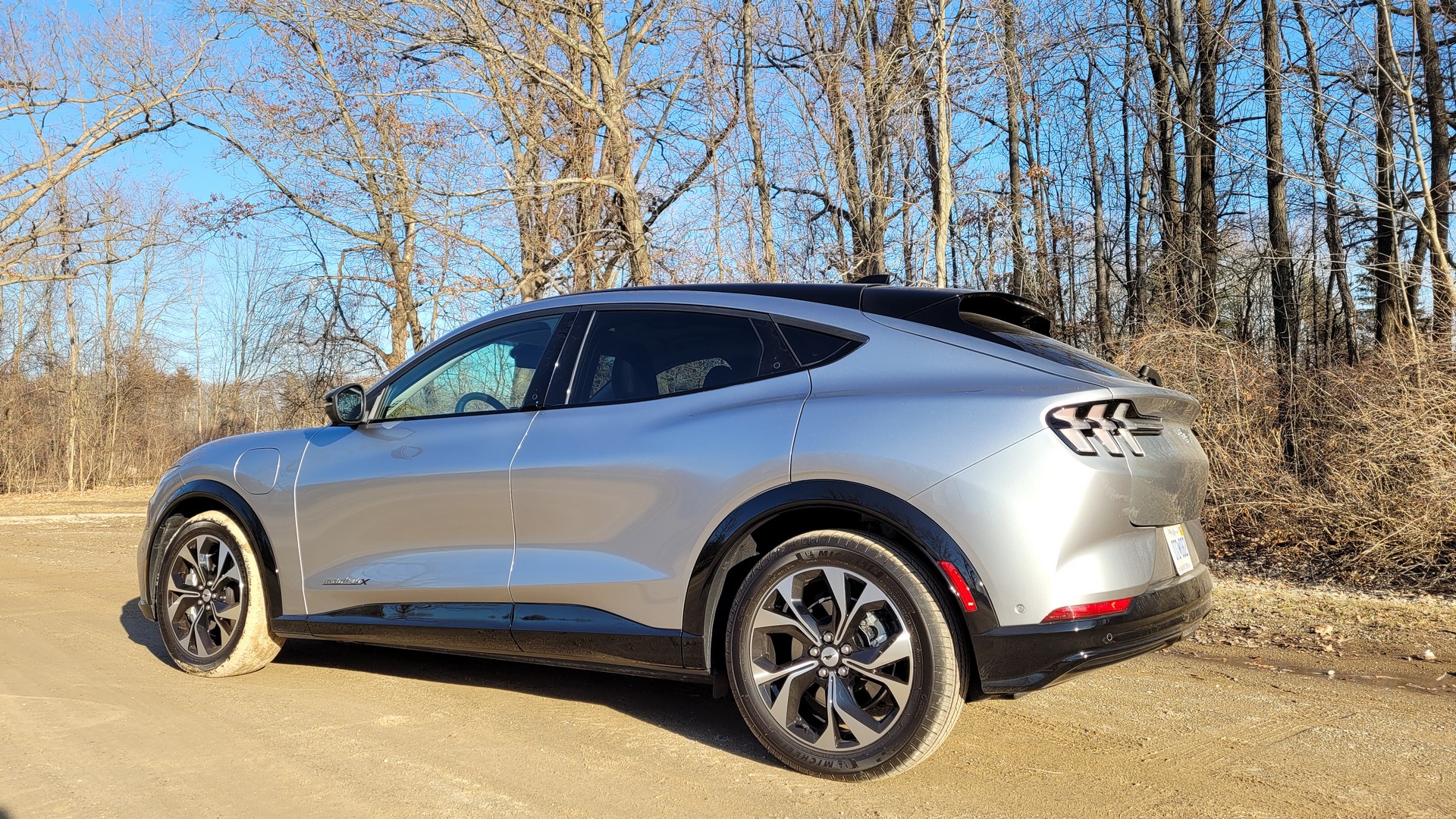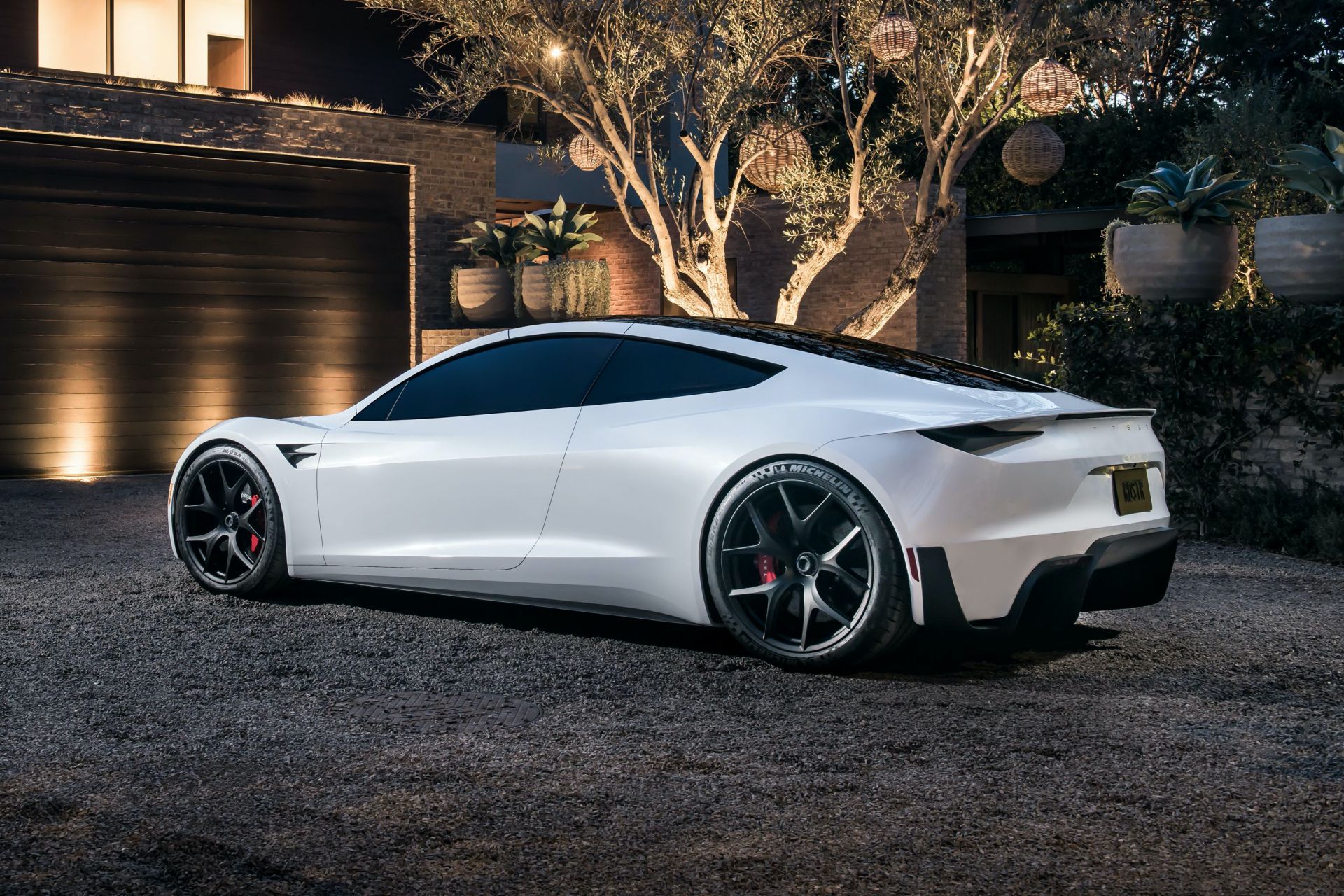The first time you fully stomp your foot to the floor in a really quick electric car is a revelatory experience. The way even a fairly ordinary EV like a Hyundai Kona Electric jumps forward without any hesitation can’t fail to leave you impressed. And in something like a Tesla Model 3 Performance or, better still, a Model S, or a Porsche Taycan Turbo S, you’ll be genuinely shocked by the sheer violence over those first few feet, no matter how many supercars or theme park rides you might have experienced.
But is that enough? Sure, it’s exhilarating to have the wind knocked out of you when you leave the line, and to see the car in the next lane disappear out of your side window and reappear in the rear one. But isn’t there more to a great performance car than that? I think there is.
Also Read: Our First Drive Of The Ford Mustang Mach-E
And I am talking here about performance cars, cars that are designed to be exciting. I can absolutely see how the no noise, zero emissions, easily accessible punch of an EV makes electric power a good fit for a regular cars like the Nissan Leaf, and even the Mustang Mach-E. But the enthusiast in me still finds them wanting.
I’ve driven various Teslas and the Taycan, and I’ve also been lucky enough to spend time with plenty of traditional gas-engined performance cars and supercars. And though those modern electric cars would give the modern hypercars a serious run for their money from the lights and in a roll-on race, thinking back it’s difficult to remember much about the experience of driving a Taycan, but easy to recall pretty much every detail of time spent in a 911.
Synthetic Soul
I think there are a few reasons for this. The most obvious is the lack of noise. Imagine watching Spielberg’s Jaws without John Williams’ bone-chilling musical accompaniment, or a western shootout without the sound of gunshots. Or to bring things up to date and give them a topical Covid twist, try watching a televised sporting event like a soccer match where the teams are playing in empty, soundless stadiums because crowds aren’t yet allowed back in.
Many electric cars have sound synthesisers to give them more character – as, we should remind ourselves, have several gas-engined cars that lost their voices when they switched to turbocharged power. The Taycan’s synthesiser is standard on the Turbo S, and optional on lesser models. But these fake noises are never as satisfying, partly because we know they’re fake. And also because, fake or not, they sound nothing like as exciting as a fully lit Lamborghini V12.
Big Power, Little Character
Gas engines have nuanced characters, too. Okay, maybe less so now most things are turbocharged, but both the sound and vibrations being transmitted to the driver, and the amount of power being sent to the tires changes according to what kind of load you’re putting the engine under, and where you are in the rev range. But you don’t really get that variation with an EV. If you’ll forgive the excursion into retro bad taste, it’s like comparing a car coated in one of those chameleon paints from the late 1990s with the same car painted in a flat red.
And since we’re talking sound and character, we should probably mention cold starts. Hagerty just did a great video talking about why cars sound so damn great when you fire them up first thing. Yes, cold-starting your Lambo at 9am on a Sunday probably annoys the hell out of the neighbors and fills your lungs with some bad stuff, but it certainly is fun. And sometimes we need a bit of fun.
Rewards Scheme
But I don’t want all of that fun to come too easily. Electric cars give you everything off the line, but then they’ve got nothing left to throw at you once the initial feeling of terror/euphoria brought on by the savage acceleration has subsided. Contrast that with the anticipation you get waiting for the crescendo to arrive in a naturally aspirated car that performs better the more you work it. There’s no Vtec, Yo! moment in an EV.
Ferrari faced a similar problem when it adopted turbochargers in the switch from 458 to 488, and fixed it by carefully tailoring the boost curve to mimic the feel of an unblown performance engine. It’ll be interesting to see if companies like Ferrari, when they’re eventually forced to switch to EV power, apply similar thinking to their electric motor tech.
Too Much Of A Good Thing?
But until that happens it feels a little like carmakers are overcompensating for their EVs shortcomings in character by simply making them outrageously rapid, to the point where you’ll struggle to even find an opportunity to experience the performance.
I can see why plenty of people might think it a fair trade. I’m not anti-electric – I really enjoyed the Mach-E I tried the other week, and I think the Taycan makes a great daily driver for those rich enough to run one. But if it’s some kind of emotional connection you’re after, it still comes up short. When it comes to performance cars I’d happily sacrifice a few tenths to 60mph for a car with more personality, whether its gas, hydrogen or battery-powered. What do you think? Let us know in the comments below.






